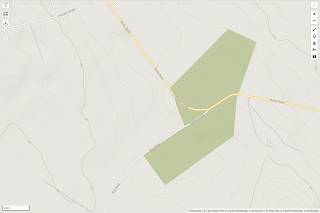ARRL Sweepstakes SSB 2022 - Indoor Antennas, QRP
Don't let anyone tell you your station isn't up to snuff!I got it into my head on Friday night that ARRL Sweepstakes SSB 2022 would be a good plan. After adding it to my calendar, it was simple enough to move my indoor EFHW radiators from my bedroom to the living room to see how they would work. (The 15 and 10 m radiators have served me previously in CQP and AZQP this year.) Saturday morning/early afternoon was my time to re-string the wires, re-tune the wires, and get another one up for 20 m as well (a key decision).
 |
| Three radiators (20m, 10m, 15m respectively) attached to the wall with a combination of Scotch tape and nails/binder clips. Note the step-up transformer and coax draped across the lampshade, connected with WAGO 221 lever splice (great things). Local time in CST. |
Going started off reasonably, getting my first running station at single-digit serials both ways (last of that occurrence). In keeping with my usual operation, of course, I was operating QRP for this contest. To get that "Q" precedence, I was also operating unassisted. RUMlogNG was my logger of choice given its simple setup and built-in rules for the contest. As an added twist, I was technically also operating emergency power only (recharged by mains when not in operation) for both TRX and logging!
Day one was searching and pouncing on 15 m, then 20 m as the MUF faded in the darkness with no impressive rate. Still, I was on the board and the station was certainly working. A solid 12 hours of off time (fiddling with a mag loop didn't net anything but decent listening on 40 m) later, I was back at it to round out the daylight between chores and other breaks.
 |
| A partial view of the radiator wires (10m, 20m, 15m with monofilament support top to bottom) across the living room ceiling. Not visible: the other WAGO 221 splice for 20m length. |
Pushing on through the day net me most of my success on 20 m (good thing I spliced together wire for 20m), plus good activity on 15 m and one QSO on 10 m. Band changes were as easy as standing up and swapping the radiator in the splice (click, SNAP!). There were plenty of ups (as expected where every QSO is a potentially high challenge) and minimal downs. A couple stations provided unsolicited, additional honest signal reports in response to my "Q" precedent. Sometimes I got in on first call, other times it took multiple tries to break in and more tries to complete the exchange.
In the end, this is definitely something to look forward to in the coming year. I had plenty of fun, even if my rates barely hit 10/h peak (bottoming at near 0/h while trying) and I didn't hit 100 total for pin eligibility. Now to wrap up the log export and get it submitted before the holiday!
72, hear you on the air!



Comments
Post a Comment